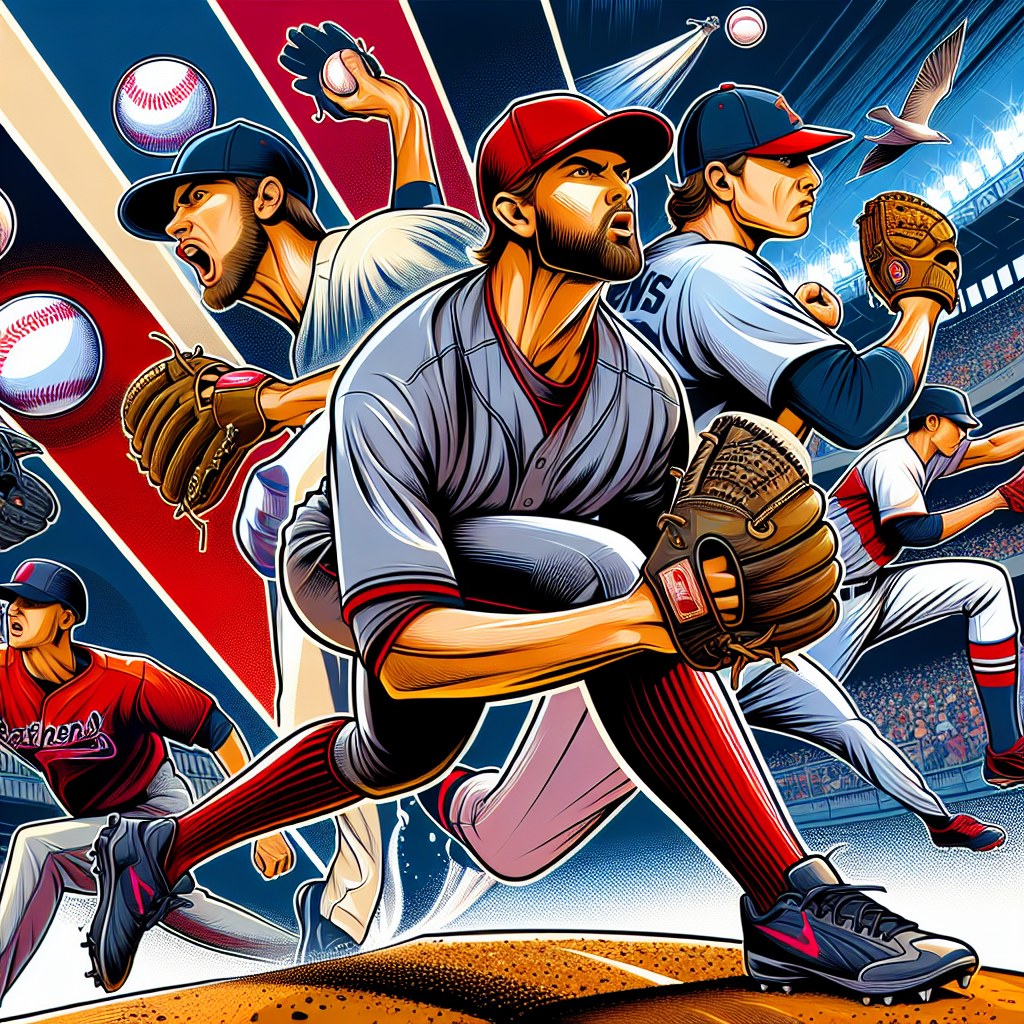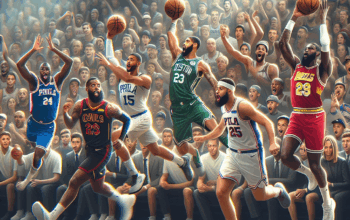Introduction
As the 2025 Major League Baseball (MLB) season unfolds, teams are actively reshaping their rosters, with star pitchers becoming the focal point of numerous trade rumors. The offseason buzz is alive with speculation as clubs look to fortify their pitching rotations, aiming for a competitive edge in the upcoming season. With several high-profile pitchers expected to change hands, fans and analysts alike are eager to dissect the latest MLB rumors surrounding teams pursuing these elite arms. In this article, we’ll explore the landscape of the league’s top pitching talents and analyze the clubs that are eyeing potential acquisitions.
Teams Aggressively Pursuing Star Pitchers
Several teams are actively engaged in the pursuit of star pitchers as they look to bolster their rotations for the 2025 MLB season. The New York Yankees, with their storied history of acquiring elite talent, have made headlines in their pursuit of young phenom Jacob deGrom from the Texas Rangers. Considered one of the best pitchers in baseball, deGrom’s high strikeout rate and significant experience make him an attractive prospect for a franchise with World Series aspirations. With the Yankees’ recent struggles in the postseason, acquiring a dominant starter could be the catalyst they need to reclaim their place atop the AL.
Meanwhile, the San Diego Padres, fresh off a strong showing in the playoffs, are also in the conversation to land a top-tier pitcher. After falling short in the NL Championship Series, the Padres recognize the need for additional pitching depth to complement their already formidable lineup. Reports indicate that they are closely monitoring the situation of Shohei Ohtani, the two-way superstar from the Los Angeles Angels, who could be available through a trade. Ohtani’s unique capabilities on the mound and at the plate make him a once-in-a-generation talent, and securing him could significantly enhance the Padres’ chances of a deep postseason run.
Key Pitchers in the Rumor Mill
As the trade deadline approaches, certain star pitchers have become focal points of rumors floating around the league. One name that has emerged frequently is Luis Castillo of the Seattle Mariners. Castillo has proved to be a consistent performer, boasting a mix of power and command that is highly coveted. Teams like the Atlanta Braves and Chicago White Sox are reportedly interested in him, believing he could solidify their rotations heading into the stretch run of the season. Castillo’s ability to throw deep into games while posting solid strikeout numbers makes him an ideal fit for teams seeking reliable pitching down the stretch.
Another pitcher stirring up significant interest is Tyler Glasnow of the Tampa Bay Rays. Despite battling injuries in previous seasons, Glasnow has emerged as a front-line starter, as evidenced by his dominant performances when healthy. The Rays are known for their analytics-driven approach and could be looking to leverage Glasnow’s skills for a lucrative return. The Toronto Blue Jays, contending for a playoff spot, are among the teams that have expressed interest. A trade involving Glasnow could potentially reshape both rosters, especially if he can maintain his health and impact.
Impact of Trades on Team Dynamics
The potential trades of star pitchers can have far-reaching effects on team dynamics. For a team like the Yankees, acquiring a top-tier starter like deGrom could revitalize their pitching staff, instilling confidence in younger pitchers, and creating a more formidable unit. Team chemistry often plays a crucial role in a successful season, and introducing a high-profile personality like deGrom may elevate the overall performance of the pitching staff, encouraging younger talent to rise to the occasion.
Conversely, losing a cornerstone pitcher can significantly impact the departing team’s morale and future prospects. For example, if the Mariners were to trade Luis Castillo, they would need to rely on their remaining rotation and younger prospects to fill the void. This could lead to a less stable environment, particularly if the trade is perceived as a step backward. Thus, the decision to trade or acquire pitchers becomes a delicate balancing act for teams looking to strengthen their playoff hopes while managing team cohesion.
Moreover, the economics of such trades also play a critical role. Many teams are under pressure to manage payroll effectively; star pitchers often command hefty salaries. For franchises like the Padres or Blue Jays, acquiring a player like Ohtani could require them to re-evaluate their financial commitments and make tough decisions regarding other contracts. These dynamics can heavily influence a team’s depth and capacity for future trades or signings.
The Role of Analytics in Trade Decisions
In 2025, the role of analytics in assessing trade viability and player value has never been more pronounced. Teams are increasingly relying on advanced metrics to guide their decisions in pursuing star pitchers. Metrics like Expected Fielding Independent Pitching (xFIP), Swinging Strike Rate, and even Pitch Movement Data are now standard tools used by front offices to evaluate a pitcher’s effectiveness and long-term potential. This analytical approach not only assists teams in scouting talent but also helps in negotiating trades by providing concrete evidence of a player’s capabilities.
For example, the Boston Red Sox have recently embraced advanced analytics in their roster construction, steering their focus towards targeting pitchers who exhibit strong underlying metrics rather than simply relying on traditional stats like ERA. Their interest in acquiring a pitcher such as Glasnow highlights this philosophy; the Red Sox’s analytics team has been tracking his recovery and performance data, determining that his potential upside substantially outweighs the risks associated with his injury history.
Moreover, the increasing sophistication of data analysis has changed how teams engage in trade discussions. Negotiations are no longer just about player history and perceived market value; they now involve a deep dive into performance data, contract valuations, and future potential. This evolution means that teams that can effectively utilize analytics are better positioned to make informed decisions, leading to smarter trades and more balanced rosters.
Future Outlook for Star Pitchers
As the 2025 season progresses, the future of star pitchers appears dynamic and ripe with potential. With several teams poised on the brink of big moves, the landscape of Major League Baseball could change rapidly. Clubs like the Kansas City Royals and Cincinnati Reds are also lurking in the background, looking to trade for talent while rebuilding. This scenario creates an intriguing backdrop for star pitchers who may be on the move, especially those who can be pivotal in both short- and long-term plans.
In this context, upcoming international talents also enter the discussion. Young pitchers from leagues around the globe are showing increasing promise, enhancing the prospect pool that teams may tap into should they choose to trade established players. The balance of power in the league could shift dramatically depending on how teams manage both their current talent and potential incoming prospects.
Furthermore, injuries and performance variations are inherent in the game, meaning that those currently viewed as star pitchers could experience drops in value, while others may ascend. The unpredictability of player performance makes this an exciting time for MLB fans, who eagerly await the outcome of trade discussions and the impact on team compositions.
Conclusion
The landscape of Major League Baseball in 2025 is a hotbed of activity characterized by organizations pursuing star pitchers to secure a competitive edge. As teams like the New York Yankees, San Diego Padres, and Seattle Mariners explore trade options, the impact of analytics, team dynamics, and player economics remains crucial in shaping these decisions. With the promise of significant shifts in team compositions, the ongoing pursuit of elite pitching talent will undoubtedly be a focal point as the season unfolds.
FAQs Section
Which teams are currently pursuing star pitchers in 2025?
Teams like the New York Yankees and San Diego Padres have been prominently mentioned in trade talks, showing interest in acquiring high-caliber pitchers like Jacob deGrom and Shohei Ohtani.
What factors influence teams’ decisions to trade for pitchers?
Teams consider various factors, including a player’s performance metrics, injury history, team needs, payroll implications, and overall team chemistry before making a trade decision.
How has analytics changed the trade market for pitchers in MLB?
Analytics have revolutionized player evaluation by providing in-depth performance data, helping teams in scouting, negotiations, and making informed trade decisions.
What potential impact do trades for star pitchers have on team dynamics?
Acquiring or losing a star pitcher can significantly affect team morale, performance stability, and overall season outlook, making it crucial to balance team dynamics in trade scenarios.
Will international players impact the MLB pitching landscape in the future?
Yes, with young international pitching talents emerging and showing promise, teams may tap into this resource as they look to improve their pitching rotations through trades or signings.












